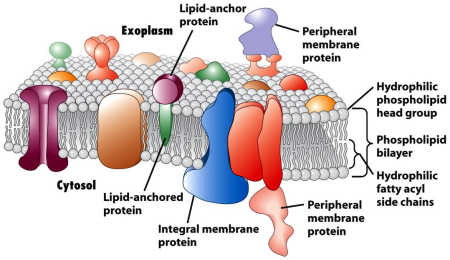Membrane Protein Identification Service
Membrane proteins, such as receptors and ion channels, are key regulators of cell function. Membrane proteins account for two-thirds of known druggable targets, highlighting their importance in the biopharmaceutical industry.
Among them, G protein-coupled receptors (GPCRs) are the largest and most versatile class of membrane receptor proteins and are the most important drug receptors, accounting for more than 50% of all human drug targets. They serve as therapeutic targets for various diseases, including cancer, cardiovascular, metabolic, central nervous system, and inflammatory diseases.
Ion channels represent another important group of membrane protein drug targets, accounting for 10% of currently marketed drugs. Nevertheless, producing sufficient quantities of pure, correctly folded membrane receptors for drug development remains a significant challenge.

Nan, L. et al. Lab on a chip. 2014.
Membrane Protein Identification
General Process for BTP-Membrane Protein Identification Service:
1. Purification of membrane proteins from cytoplasm, periplasm, or cell culture supernatant. Proteins are purified from the cytoplasm, (bacterial) periplasm, or cell culture supernatant, depending on the expression host or vector used.
2. Buffer and detergent screening for increased solubility and purification. For soluble and membrane proteins, differential scanning fluorimetry (DSF) is used to determine the optimal buffer conditions for stability. If applicable, established activity assays can correlate stability with activity state. For membrane or membrane-associated proteins, detergents are required to extract proteins from bacterial or eukaryotic membranes. Detergent use needs to be optimized concerning protein stability during extraction and purification. If proteins are expressed as inclusion bodies, conditions for optimal detergent and buffer can be optimized after resolubilization and refolding.
3. Affinity purification using His, Rho1D4, GST, or strep tags. Our high-quality affinity purification matrices can purify proteins fused with tags such as His, GST, or Strep. For membrane proteins, we recommend using the Rho1D4 system, although other tags can be used as needed. Our purification conditions are optimized and can be scaled up to milligram quantities depending on the target protein. Services can include buffer and detergent optimization to provide proteins with the best stability and activity. BTP Biotech will provide detailed documentation of all steps, including data from SDS-PAGE and Western Blot.
Further purification steps can be used to prepare homogeneous protein components for crystallization. To obtain proteins suitable for experiments such as protein crystallization or functional binding assays, additional purification steps such as anion or cation exchange chromatography or gel filtration can be used.
How to order?





